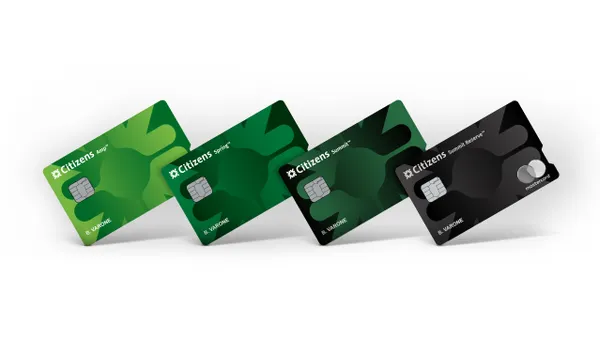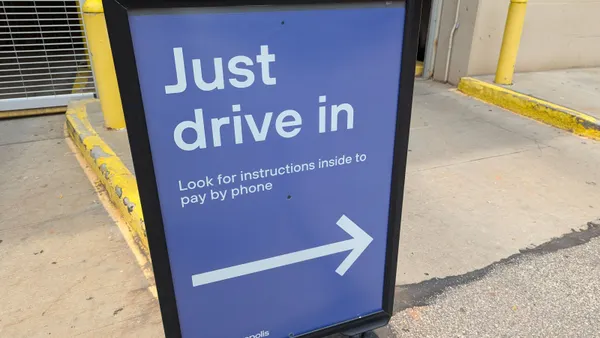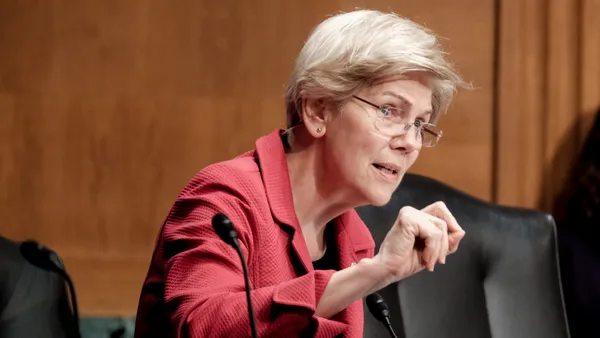Dive Brief:
- In the Federal Reserve’s triennial payments study, the central bank said payments via credit, debit and prepaid cards, automated clearinghouse transfers and checks increased, collectively, from 2018 to 2021. In a measurement of those types separately, ACH payments rose during the period to make up the majority of noncash payments by value in 2021, while cards were used most frequently in a count by transactions.
- The 2022 Federal Reserve Payments Study shed light on noncash payments, with increases likely influenced by consumers, businesses and governments shifting to digital payments during the COVID-19 pandemic that began in early 2020. The value of card, ACH and check payments grew faster between 2018 and 2021 than any prior period, reaching $128.51 trillion in 2021, according to study’s initial data release on Friday.
- Additionally, the number of those noncash payments made also grew by a bigger amount during the three-year period than in any other measured period since 2000, totaling 204.5 billion transactions in 2021, the Fed said.
Dive Insight:
The Fed study, which collects U.S. data from card networks, major payment processors and depository institutions, has been conducted every three years since 2001 (and annual supplements have been released since 2017). This iteration spotlights the rapid adoption of contactless payments during the pandemic as consumers and businesses were forced to pivot.
Automated clearinghouse, or ACH, payments use, for example, got a boost from the federal government’s issuing of stimulus payments during the pandemic. Between 2018 and 2021, the increase in value in ACH payments, collectively, made up more than 90% of the growth in noncash payments value, the Fed said.
During that period, the number of ACH transfers grew 8.3% per year while the value of ACH payments rose 12.7% per year. In 2021, ACH transfers accounted for $91.85 trillion, or 72%, of noncash payments value by 2021.
Although the number of check payments dropped significantly during the three-year period, the value of such payments, on average, rose “substantially,” the Fed said. From 2018 to 2021, the average value of check payments climbed 27%, to $2,430.
The number of checks written dropped by about 7.2% annually between 2018 and 2021, with 11.2 billion checks written in 2021, the Fed said. By that year, check payments value totaled $27.23 trillion, about 21% of noncash payments value.
Card payments value grew at a faster rate between 2018 and 2021 than during any other time period the study has measured, jumping 10% in each of those three years, the Fed said. The value of those payments amounted to $9.43 trillion in 2021, making up about 7% of noncash payments value that year.
By card type, the value of prepaid debit card payments grew fastest on annual basis, at 20.6% per year since 2018, but remained a small portion of card payments value, at 6.5%.
Growth in the number of card payments fueled the broader noncash group, the Fed said. That number rose by 25.9 billion from 2018 to 2021, making up about 84% of the growth in the overall number of noncash payments during the three-year period.
The number of card payments in 2021 totaled 157 billion, comprising about 77% percent of noncash payments by number. Debit in particular experienced a surge in use during the pandemic. Among card types, non-prepaid debit card payments increased the most by number, totaling 87.8 billion payments – or 56% of all card payments – in 2021, the Fed said.
Credit card payments made up about one-third of card payments, reaching 51.1 billion in 2021. Prepaid debit card payments jumped the most, at a 9.6% annual rate in terms of the number of payments, to a total of 18.1 billion by 2021.
Perhaps unsurprising given the rise of digital payment methods, the number of ATM withdrawals tanked during the three year period, the Fed data showed. ATM withdrawals dropped by 10.1% per year between 2018 and 2021, decreasing to 3.7 billion withdrawals in 2021, from 5.2 billion in 2015.
Notably, however, the average value of an ATM cash withdrawal actually increased from $156 in 2018 to $198 in 2021, the Fed said. The study didn’t provide any cash payments data.












